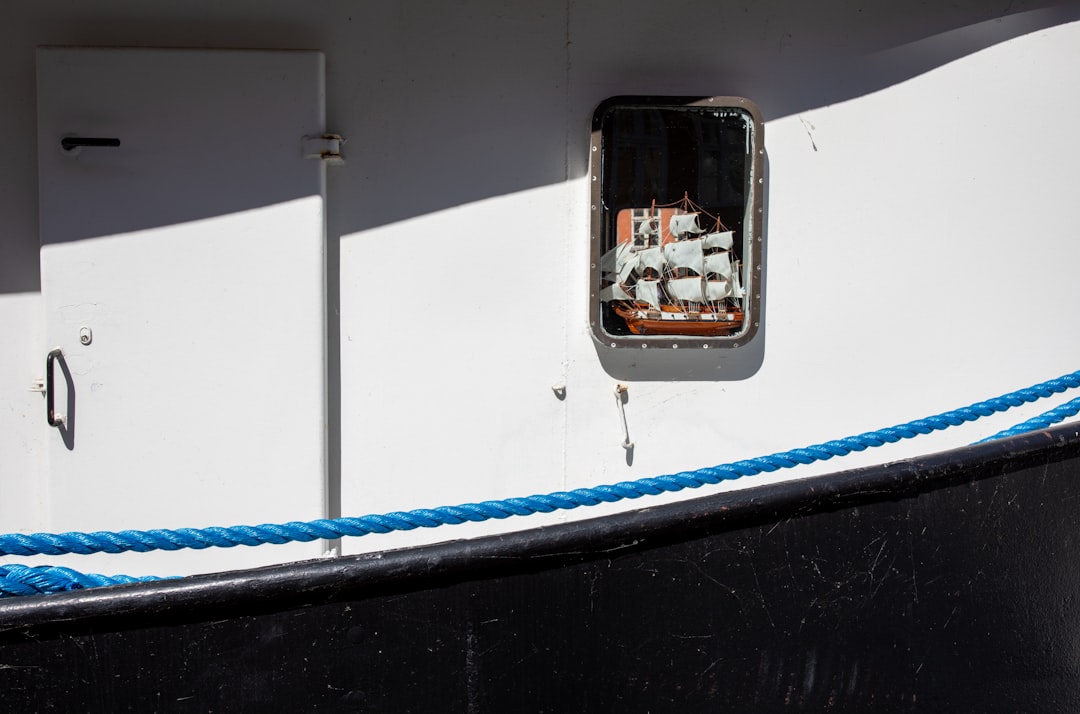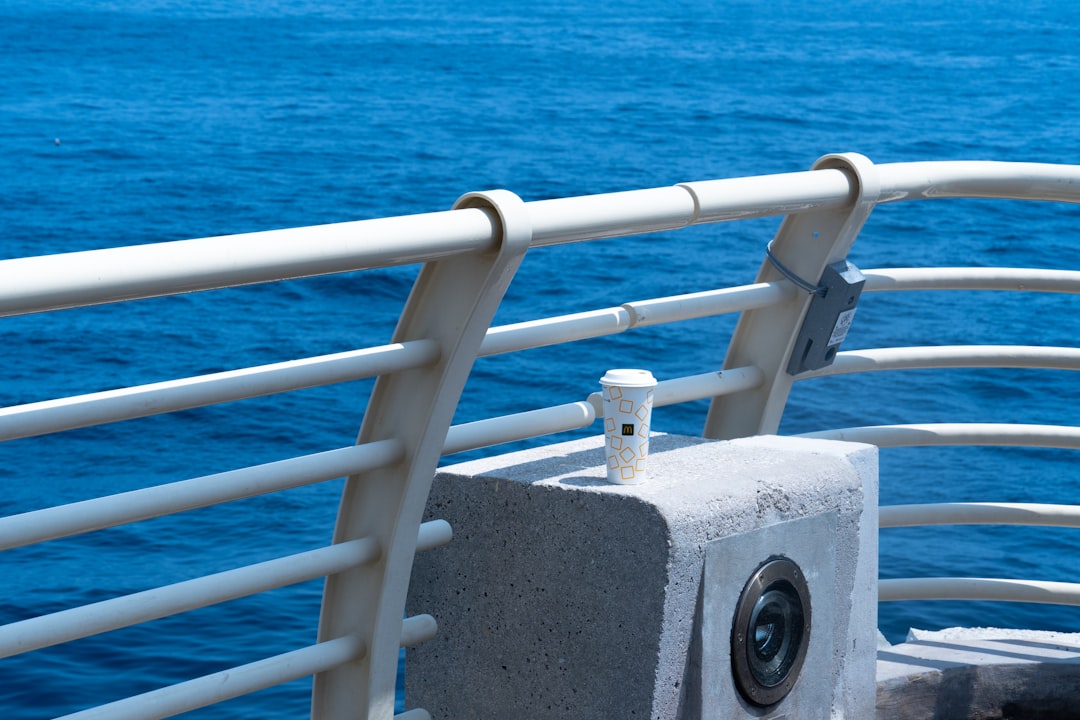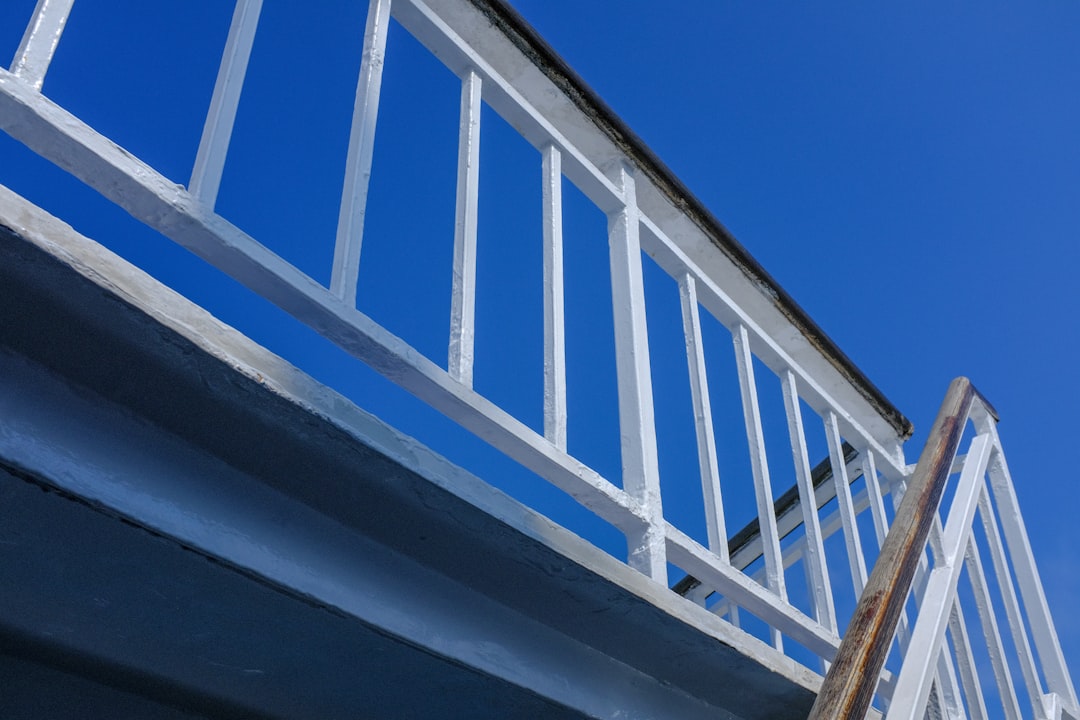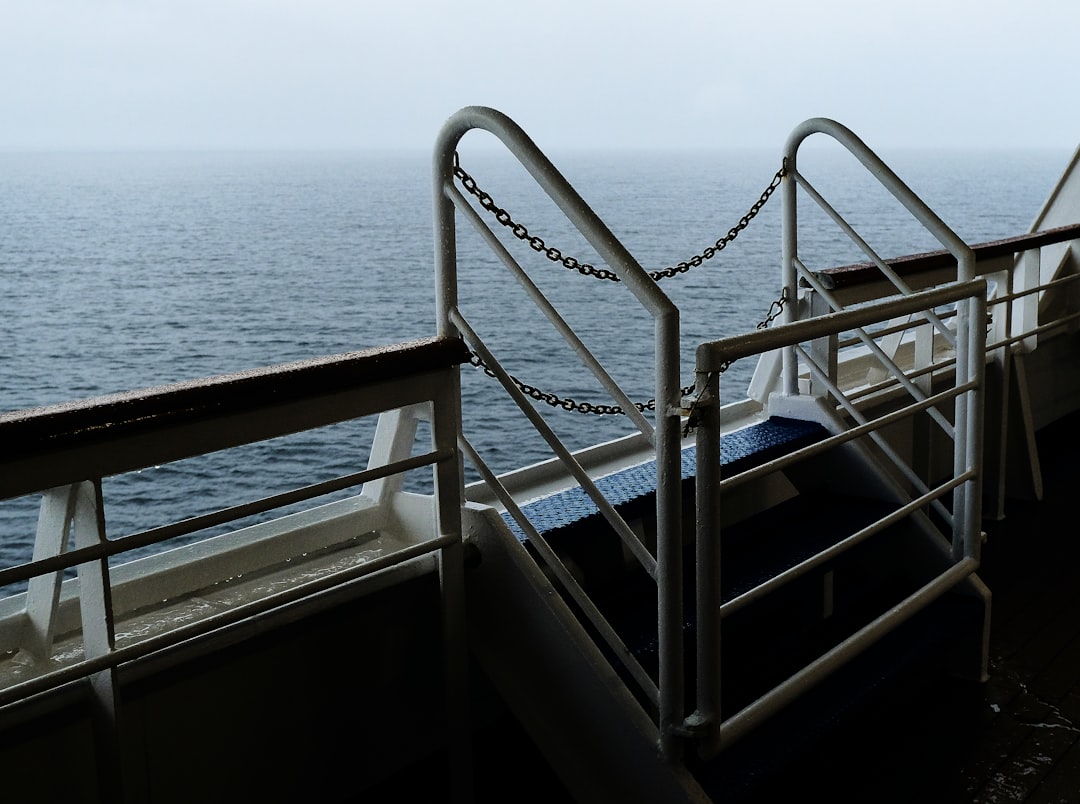

Engage prospects with a scan and streamline customer engagement with FREE QR code marketing tools by Sona – no strings attached!
Create a Free QR CodeFree consultation

No commitment

Engage prospects with a scan and streamline customer engagement with FREE QR code marketing tools by Sona – no strings attached!
Create a Free QR CodeFree consultation

No commitment
Deck sealing services are experiencing growing demand as homeowners and property managers recognize the importance of protecting outdoor decks from weather, moisture, and everyday wear. Yet many providers still struggle to connect moments of offline interest to measurable online action. A neighbor notices a jobsite sign, a homeowner grabs a flyer during a store visit, or a past client keeps your business card in a drawer. Without an easy way to respond in the moment, those signals remain untracked and too often they fade.
QR codes offer a simple bridge from interest to action. By placing QR codes on every physical asset, deck sealing companies give prospects instant access to quotes, booking calendars, project galleries, cost calculators, and reviews. Each scan captures intent in real time, creating an actionable lead while providing attribution that shows which assets, locations, and messages perform best. See QR codes in marketing.
This article explains how to deploy QR codes across your materials and workflows to drive more bookings, strengthen customer experience, and turn every scan into measurable progress. Whether you are managing one truck or several crews, you will learn how to modernize offline touchpoints, segment audiences for follow-up, and prove ROI from first scan to closed revenue.

Deck sealing buyers often research quickly and locally. They spot jobs happening in their neighborhood, ask friends, or notice before-and-after photos during a store trip. Traditional tactics such as printed brochures, paper quote forms, and generic yard signs make it hard for people to engage at peak interest. QR codes simplify that journey by turning every physical impression into a digital next step like "Scan to get a same-week estimate" or "Scan to see stain colors on your deck type."
Moving from static assets to QR-enabled touchpoints also fixes an ongoing data problem. When someone scans, you capture a time stamp, channel, and device, then route them into a booking or quote workflow that enriches your CRM. Teams see exactly which neighborhoods or placements generate high-intent leads, which CTAs convert, and where to invest the next marketing dollar.
For example, one regional provider replaced printed quote pads with QR codes on jobsite signs and invoices that opened a mobile quote request. In eight weeks they recorded a 40 percent lift in appointment requests and cut average response time from 24 hours to under 2 hours because every scan created an instant lead with alerts to the scheduler.

Deck sealing is a local, trust-driven purchase where quick access to proof points matters. Prospects want to see examples of decks like theirs, understand pricing ranges, and confirm warranty or maintenance details. Asking them to save a web address or call later adds friction and increases abandonment. QR codes reduce that friction and capture interest precisely when attention peaks, such as during a walk past a neighbor's project or while opening your mailer on a Saturday morning.
They also bring trackability to offline marketing. Flyers, yard signs, and vehicle wraps can finally report performance, so you know which neighborhoods respond, which messages resonate, and what time of day scans tend to spike. With dynamic QR codes in Sona QR, you can update destinations as offers change, without reprinting materials. See how signage strategies translate across industries in this guide to QR in real estate marketing.
Different moments call for different QR formats. A homeowner who passes a jobsite may be ready to request a quote, while someone receiving a thank-you card after a completed job is more likely to leave a review. Selecting the right format ensures that every scan opens the most relevant action.
Dynamic QR codes are ideal for marketing because they allow tracking, editing, and A/B testing after printing. Static codes fit stable destinations like a warranty PDF but lack flexibility and analytics. Most deck sealing teams see the best results when they standardize on dynamic QR for external assets, then reserve static codes for internal documents that rarely change.
With Sona QR, you can generate each format, run multivariate tests, and centralize management. That means you can compare, for instance, a scan-to-form flow versus a scan-to-calendar flow and keep the highest converter without replacing printed assets. Start creating QR codes for free.

QR codes perform best where attention is already earned. Map your field activities and printed touchpoints, then overlay QR CTAs that fit each environment. Think about the physical context, viewing distance, and scanning convenience. A yard sign is seen from the sidewalk or car, so the code needs proper size and a short CTA. A direct mailer arrives at home, so you can present a larger code with multiple benefit statements.
By making every physical impression actionable, you not only capture more leads but also gain visibility into which neighborhoods drive the best results. Over time, this data informs route planning, local promotions, and even partnerships with nearby hardware stores.

Great QR programs align each placement to a clear intent. A passerby needs inspiration and a fast quote. A past client needs maintenance reminders and an easy referral pathway. By designing codes for these moments, you accelerate movement through the funnel and build durable relationships.
Use cases should be scoped with a measurable outcome. Decide whether a code is meant to drive bookings, convert upsells, collect reviews, or segment audiences for retargeting. Then build the destination and tracking setup to match that goal.
Every scan is a micro-conversion that reveals intent, urgency, and context. When you place distinct QR codes by channel and funnel stage, you create automatic segments that power targeted follow-up. A weekend scan from a jobsite sign likely signals a homeowner near one of your current projects. A weekday scan from an invoice QR likely indicates a satisfied client who could review or refer.
Use a QR management platform to tag each code by use case, location, and campaign. Sync those tags into your CRM and advertising tools so you can trigger workflows and build custom audiences without manual sorting. For retargeting tactics, see Sona’s Playbook “Driving High-Impact Campaigns with First-Party Intent Signals”.
With Sona QR, each code can carry metadata that travels into your CRM, making it easy to retarget a "jobsite-sign-scanner" differently from a "past-client-referral-scanner." Over time, this precision reduces ad waste and shortens sales cycles.
QR codes act as connective tissue across your campaigns. They make print measurable, events actionable, and post-purchase touchpoints repeatable. When your codes, landing pages, and automations are aligned, you get a fluid journey from first sighting to deposit paid.
Think about how deck sealing is typically marketed: yard signs, door hangers, local mailers, vehicle wraps, home shows, and partnerships with local hardware stores. Embed codes into each channel with a CTA that fits the context, then unify reporting in one dashboard.
Centralizing all this activity with Sona QR turns each scan into a data point you can act on. You will know which channels drive serious buyers, how long it takes scanners to convert, and where to double down for the next season.
A strong QR rollout balances strategy, design, and operations. You need the right CTAs, scannable artwork across varying distances, and a workflow that turns every scan into a next step for your team and your prospect. Use this checklist as a blueprint for a launch that scales.
Start by selecting one or two high-visibility placements to prove value fast, such as yard signs and direct mail. Once you see consistent scans and bookings, extend the approach to vehicles, referral cards, and point-of-sale materials.
Clarify the single action each code should drive. For jobsite signs, you might anchor on "Book a free inspection." For invoices, the action could be "Leave a review in 30 seconds" or "Enroll in an annual maintenance plan."
Match the destination to the action. Inspections should open a mobile calendar with available slots and a form that pre-fills based on scan source. Reviews should open directly to the correct platform with simple star ratings and a short comment box.
Choose dynamic QR codes for all external campaigns. These allow you to update destinations as promotions change and to capture analytics without replacing printed assets. Dynamic codes also support A/B testing of messages, colors, and CTAs.
Reserve static codes for stable assets such as warranty PDFs or internal crew documents. Keep static use limited to avoid losing the ability to optimize.
Follow sizing and contrast best practices. On yard signs, a code of at least 1.5 inches works for sidewalk distances, while vehicle decals need larger sizes to scan from a car at a stoplight. Maintain high contrast between code and background, and keep quiet zones clear.
Use benefit-first CTAs like "Scan for a same-week estimate," "Scan to see your deck color options," or "Scan to claim spring pricing." Add a short subhead that sets expectations, such as "Answer 6 quick questions, no obligation."
Start with the assets that already get attention but lack attribution. Common first placements include yard signs, door hangers, invoices, business cards, and vehicle wraps. Add unique codes for each asset so you can compare performance.
Stagger deployments to control variables. Roll out to a subset of neighborhoods or a single crew for two weeks, then expand based on the winners. Document placements and dates to aid analysis later.
Track scan volumes by day and hour, device type, and location. Watch conversion rates from scan to lead and lead to scheduled appointment. Identify drop-offs and refine landing pages or form fields to remove friction.
Use Sona QR to push real-time alerts to your scheduler when high-intent scans occur, then feed outcomes back into the platform. Over time, build a playbook of best-performing CTAs, assets, and neighborhoods for each season. For measurement frameworks, read Sona’s blog post “Single vs Multi-Touch Attribution Models”.

Without tracking, QR codes are just pretty squares. The power lies in their ability to transform anonymous offline attention into measurable online behavior that maps to revenue. You want to know which signs, mailers, or trucks drove scans, which scans became qualified leads, and which leads turned into sealed decks.
A connected analytics stack ensures that scan data does not live in a silo. Sona is an AI-powered marketing platform that turns first-party data into revenue through automated attribution, data activation, and workflow orchestration. Integrate QR events into your CRM, tagging each contact with source and campaign. Use those tags to prioritize follow-up and to attribute revenue to the assets and messages that actually worked. For strategy, read Sona’s blog post “The Essential Guide to Offline Attribution: Maximizing ROI Through Offline Channels”.
Sona QR captures on-the-ground engagement while Sona.com connects those moments to buyer journeys and revenue. This combination moves QR from a gimmick to a core part of your performance marketing program.
Once your first campaigns are live, small refinements can compound results. Think like a scientist and test one variable at a time: the CTA, the offer, the landing page, or the placement. Pair these experiments with staff training so everyone promotes the scans consistently.
Consider the full lifecycle as well. QR codes can help you acquire new customers and keep existing ones engaged with maintenance plans, seasonal reminders, and referral rewards. Closing the loop turns one project into multiple revenue events.
Innovation often comes from small, practical tweaks. Many deck sealing companies have found that adding QR codes to existing assets delivers outsize returns without a complete brand overhaul. The key is a strong CTA and a destination that respects the scanner's time.
Here are a few ideas drawn from real campaigns and adapted for deck sealing:
QR success is as much about execution as it is about technology. Scannability, messaging, and the quality of the destination matter. So do internal processes that ensure a fast response when a high-intent lead appears.
Avoid mistakes that generate scans but lose momentum. If a code opens a slow website or a generic homepage, you will squander interest. If follow-up takes days, prospects will move on to another provider.
Modern marketing success in deck sealing relies on the ability to capture and act on every signal of customer interest wherever it appears. QR codes provide a digital bridge across offline touchpoints, from jobsite signs to print collateral, where potential leads often remain invisible to traditional tracking. Providers who embrace QR strategies deliver faster responses, smoother journeys, and better proof of value for skeptical buyers.
QR codes also establish a data-rich foundation for growth. You can attribute bookings to specific assets, tailor follow-up to real behavior, and optimize spend with confidence. When combined with a platform like Sona QR for creation and tracking, and Sona.com for journey analytics and attribution, QR campaigns evolve from simple links into a repeatable engine for demand capture, customer retention, and measurable revenue.
Ready to test the waters? Start with two high-visibility placements, create dynamic codes with benefit-led CTAs, and connect scans to a mobile booking flow. Measure, refine, and expand. With a few focused deployments, you will turn everyday materials into always-on entry points that convert neighborhood interest into scheduled inspections and sealed decks.
QR codes have transformed deck sealing services from traditional marketing into dynamic, measurable growth opportunities. Whether it’s attracting new customers, enhancing client interactions, or streamlining service access, QR codes replace outdated methods with instant, mobile-friendly solutions that capture real-time engagement data to maximize every customer touchpoint.
Imagine homeowners effortlessly scanning a code to schedule services, access maintenance tips, or receive exclusive offers—all while you track which campaigns drive the most bookings. With Sona QR, you can create dynamic, trackable QR codes in seconds, update campaigns instantly without reprinting, and connect every scan directly to your revenue streams. No wasted effort, no missed leads—just smarter, more profitable deck sealing campaigns.
Start for free with Sona QR today and turn every scan into a satisfied customer and a sealed deal.
Deck sealing protects outdoor decks from weather, moisture, and everyday wear, extending their longevity and maintaining their appearance.
QR codes bridge offline interest to online action by providing instant access to quotes, booking calendars, project galleries, and reviews, while capturing real-time intent and enabling measurable lead tracking.
Dynamic QR codes are ideal for external marketing due to their flexibility and tracking capabilities, while static codes suit stable assets like warranty PDFs that rarely change.
Place QR codes on yard signs, jobsite banners, vehicle decals, business cards, door hangers, invoices, direct mail, and in-store displays to capture interest at various customer touchpoints.
Use clear, benefit-driven CTAs such as 'Scan for a same-week estimate' with high-contrast, scannable codes sized appropriately for the viewing distance and environment.
Integrating QR codes with CRM systems captures scan data like time, location, and asset source to monitor scan-to-lead conversion, optimize marketing spend, and automate follow-up workflows.
The process includes defining desired actions, choosing dynamic codes for flexibility, designing clear CTAs, deploying on high-impact assets, and monitoring scans to optimize performance.
Use QR codes on invoices and thank-you cards to enable easy enrollment in maintenance plans, collect reviews, and offer referral rewards to improve retention and generate new leads.
Track scan volume by asset and location, scan-to-lead rate, lead-to-appointment rate, response times, and revenue attribution to understand campaign effectiveness.
While the article does not specify exact intervals, it implies that seasonal or periodic sealing is important, with QR codes helping schedule maintenance reminders and reseals.
The article does not list specific signs, but generally, weathering, moisture damage, and wear are reasons to consider deck sealing, prompting homeowners to seek timely service.
Look for providers that offer easy access to quotes, clear proof points like before-and-after galleries, responsive booking processes, and customer reviews accessible via QR codes.
The article does not directly address environmental factors, but providing stain options and maintenance tips via QR codes can help customers make informed, eco-conscious choices.
The article does not specify service duration, but quick booking via QR codes and same-week estimates suggest providers aim for timely scheduling and efficient service.
The article does not provide pricing details but mentions QR-enabled cost calculators and quote forms that allow prospects to get estimates instantly.
Enroll in maintenance plans and follow seasonal reseal reminders accessible through QR codes to preserve deck condition and extend service life.
Pitfalls include using slow or generic landing pages, multiple codes per asset causing confusion, outdated destinations, and lack of staff training on promoting QR benefits.
Use Sona QR's trackable codes to improve customer acquisition and engagement today.
Create Your FREE Trackable QR Code in SecondsJoin results-focused teams combining Sona Platform automation with advanced Google Ads strategies to scale lead generation

Connect your existing CRM

Free Account Enrichment

No setup fees
No commitment required

Free consultation

Get a custom Google Ads roadmap for your business






Launch campaigns that generate qualified leads in 30 days or less.
